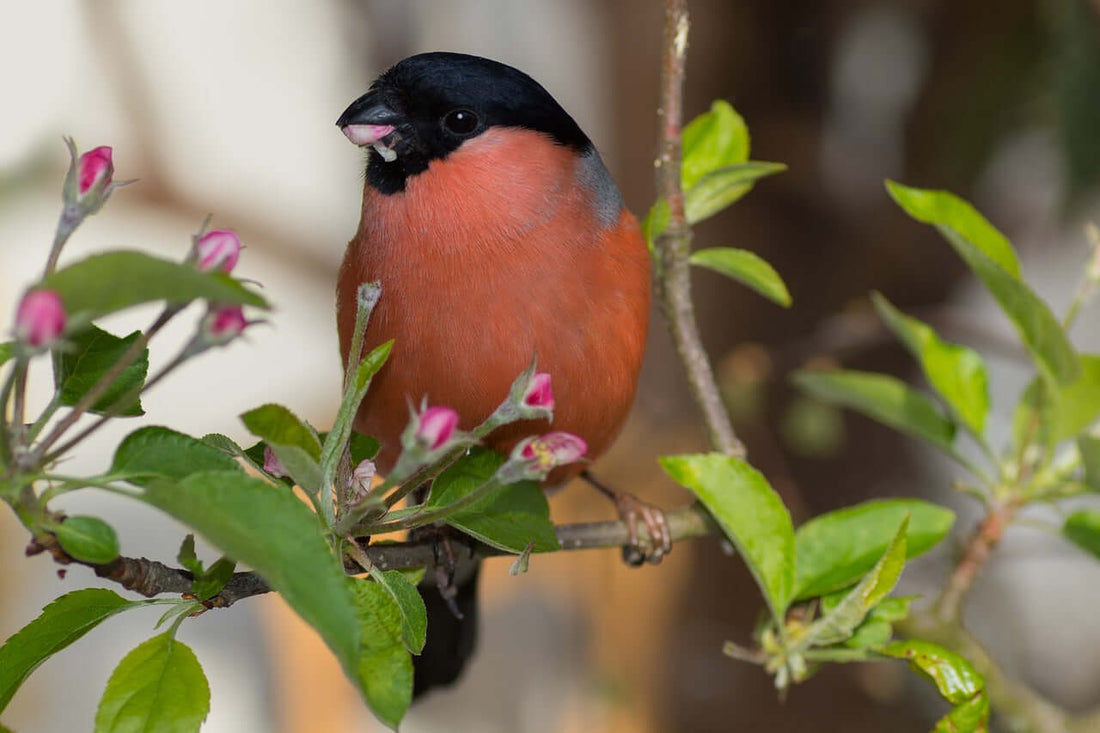
Bullfinches: Understanding Their Diet and Habitat Needs
Share
Bullfinches (Pyrrhula pyrrhula) are one of the most captivating birds found in the UK, known for their striking appearance and melodic calls. These small birds are easily recognisable, with males boasting vibrant pinkish-red underparts and a black cap, while females have a more subdued, brownish-grey hue. Their stout bodies and short, robust bills are perfectly adapted to their feeding habits and lifestyle.

Bullfinches are residents of the UK year-round, favouring a variety of habitats. They are typically found in woodland areas, hedgerows, orchards, and gardens, where dense foliage provides ample cover. These birds are relatively shy and prefer areas with plenty of shrubs and trees to offer protection and nesting sites. Although they can be spotted throughout the UK, they are less common in the northernmost parts of Scotland and tend to be more abundant in England and Wales.
The diet of bullfinches is diverse and seasonal. In the spring and summer months, they primarily feed on buds, seeds, and insects. One of their most notable feeding behaviours is their preference for fruit tree buds, which can sometimes bring them into conflict with gardeners and fruit growers. During autumn and winter, their diet shifts towards seeds from various plants, including nettles and dock. They are also known to consume berries, such as those from hawthorn and elderberry bushes, providing a vital food source during the colder months. A shy visitor to the garden, they will come for peanuts and seeds, especially black rape.
Bullfinches use their strong, conical bills to adeptly crush seeds and extract the nutritious contents. Their feeding habits play a crucial role in their ecosystems, aiding in the dispersal of seeds and the control of certain plant populations.

While bullfinches are not currently endangered, their population has seen declines due to habitat loss and changes in agricultural practices. Conservation efforts, including the preservation of hedgerows and the promotion of wildlife-friendly gardens, are essential to support their populations.
For bird enthusiasts, observing bullfinches can be a delightful experience. Providing a variety of seed-bearing plants and maintaining a quiet, sheltered garden environment can attract these beautiful birds, allowing for closer appreciation of their stunning plumage and gentle calls.
In summary, bullfinches enrich the natural landscape with their vivid colours and unique feeding habits. Their presence is a testament to the diversity and beauty of our country's wildlife.

Written by Angela.
